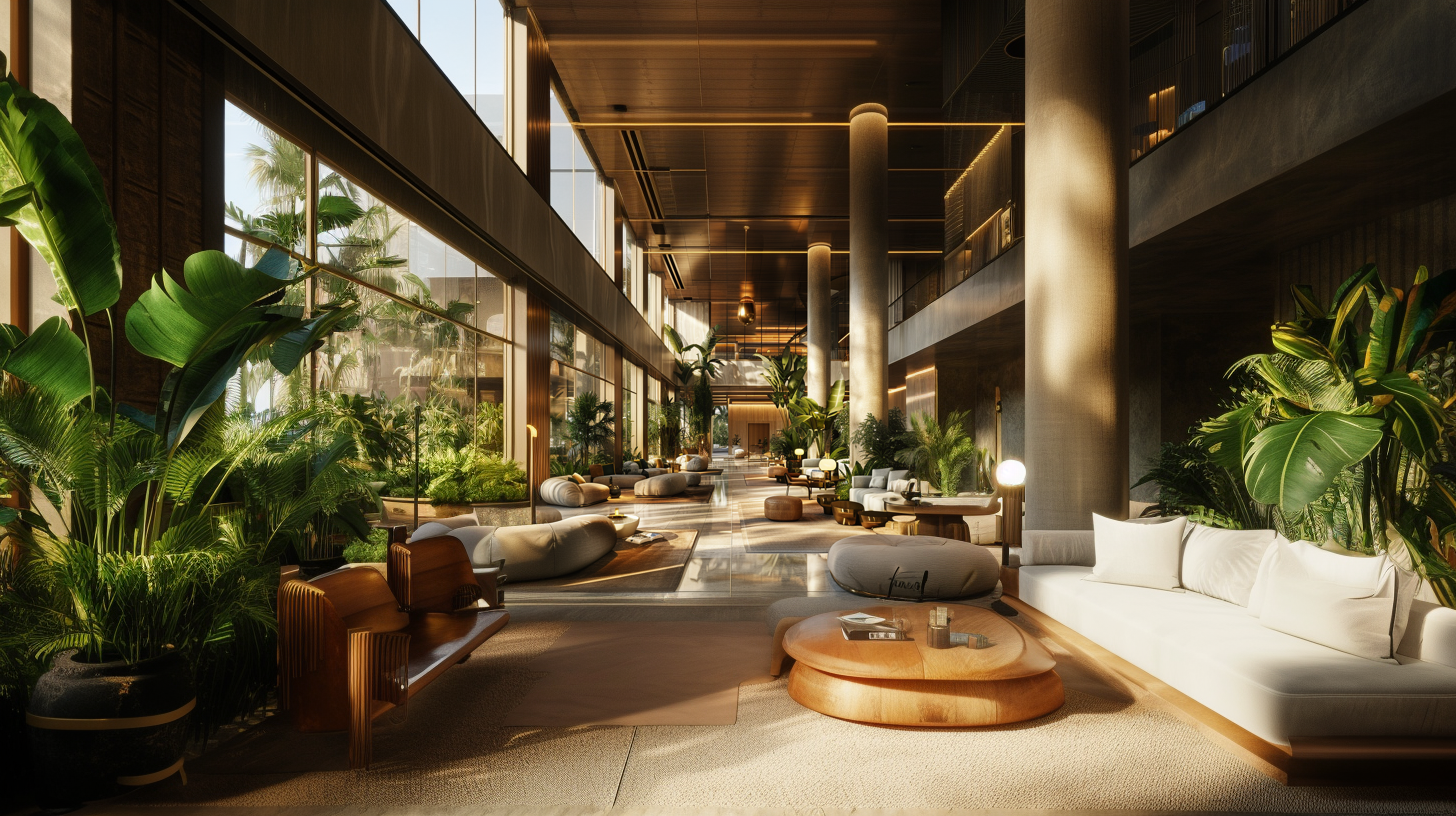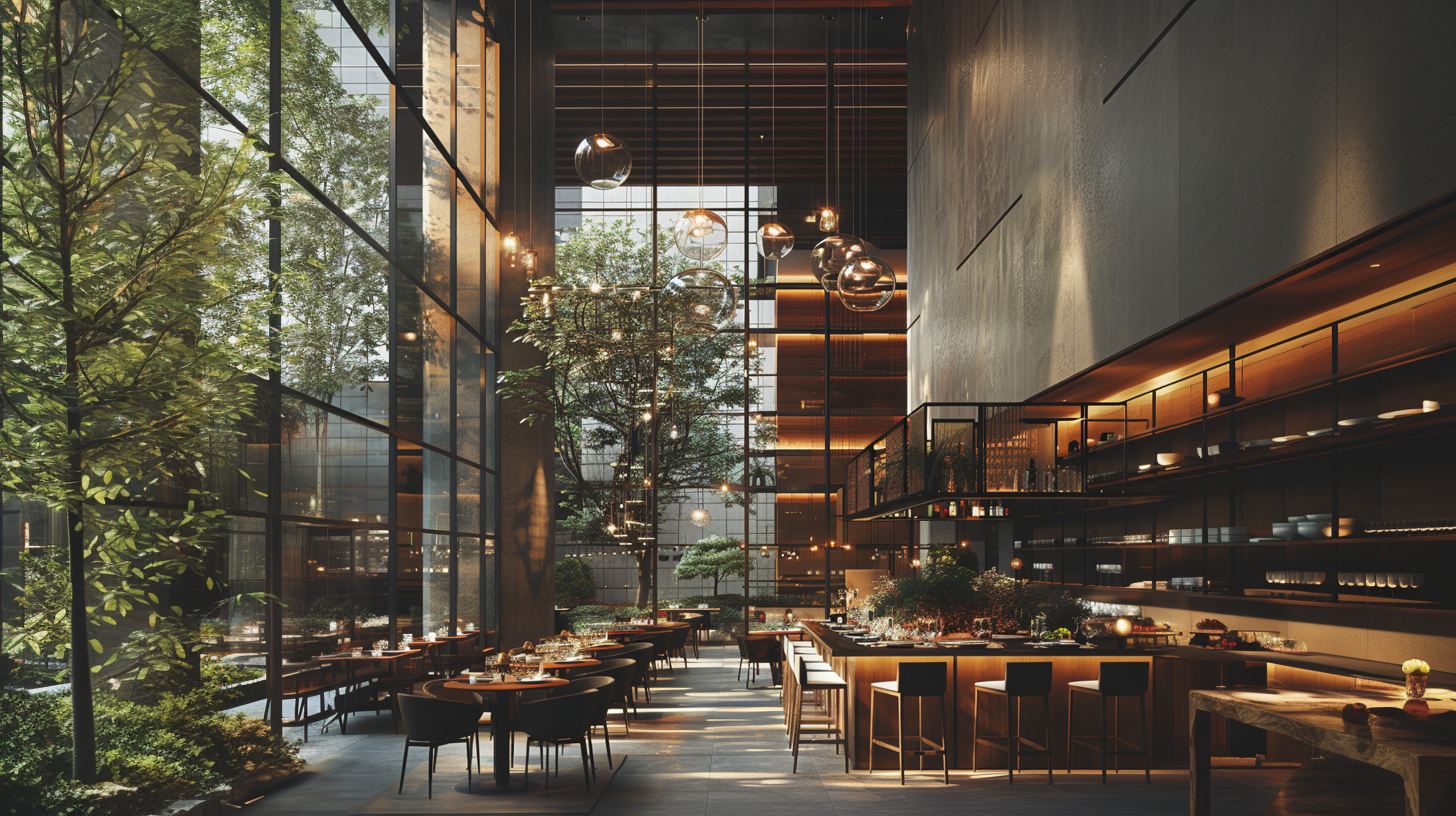The Secret Ingredient of Brand Loyalty?
Experiential Hospitality Design That Feels Personal
In hospitality design, it’s no longer enough to look good; your spaces need to FEEL good, SMELL good, and MEAN something. Today’s travelers are loyal not to logos, but to experiences. The most magnetic hotels and restaurants win hearts (and hashtags) through experiential design, spaces that blend story, sensory engagement, and emotional connection.
Welcome to the era where Hospitality Design meets storytelling and social shareability.
A lobby designed for connection: where atmosphere meets brand experience.
Design as the Heart of Brand Loyalty
Brand loyalty used to live in marketing. Now, it’s built into the architecture.
Whether it’s a boutique hotel, a destination restaurant, or a social club, guests crave authenticity. Every material, color palette, and lighting cue contributes to how they remember you, and whether they’ll come back.
Great Experiential Design creates emotional bonds. It transforms physical spaces into living expressions of brand identity, encouraging guests to share their experiences and, more importantly, return for more.
When done right, design IS your marketing.
Storytelling: The Soul of Experiential Design
Behind every memorable hotel or restaurant interior lies a story. Storytelling gives design its emotional depth; it’s how guests connect to your brand beyond the surface.
Rosewood Hotels’ “Sense of Place” mantra makes every property distinct, weaving local architecture, art, and materials into one narrative.
Ace Hotels turned lobbies into creative hubs where design and community intersect; the story isn’t just décor, it’s belonging.
STK, designed by ICRAVE, merges dining with nightlife, crafting a brand that’s as much about energy as cuisine.
At DESIGNBAR, storytelling drives every project. It’s Commercial Interior Design that performs double duty: functional and unforgettable.
Every texture has a purpose: a tactile narrative that connects guests to the brand.
Designing for Social Media Moments (Without Selling Out)
Let’s be honest, social media drives visibility. But the key isn’t chasing “Video-grammable” gimmicks; it’s crafting authentic, sensory moments worth capturing.
Think of it as sensory-focused interior design for hotels, spaces that photograph beautifully because they feel incredible in person.
Lighting that flatters, textures that invite touch, and vignettes that naturally frame people in the scene, these are the design details that turn guests into your best storytellers.
Remember: guests don’t share perfection; they share emotion. Design for surprise, delight, and connection, not just aesthetics.
Sustainability and Wellness: Loyalty’s Silent Influencers
Sustainability and wellness are no longer bonus features; they’re loyalty builders. Guests are increasingly loyal to brands that align with their values and make them feel good inside and out.
A sustainable hospitality design approach might include renewable materials, locally sourced finishes, low-VOC paints, or biophilic features that connect guests to nature. Even subtle choices, like circadian lighting or air-purifying plants, can increase satisfaction and perceived comfort by up to 30% (Cornell Hospitality Research, 2024).
When Sustainable Design meets Wellness Interior Design, guests don’t just love your brand, they trust it.
Sustainability meets serenity: wellness-focused hospitality design that nurtures loyalty.
Case Studies: When Design Becomes Brand
Dishoom, London
Every detail is rooted in nostalgia for 1960s Bombay cafés. The storytelling is so immersive that guests don’t just eat, they time travel.
Their private club aesthetic has become a design empire. Naturally so since SOHO House also focuses their exclusivity on Creatives. Loyalty here isn’t transactional, it’s emotional. Each property carries the same DNA but adapts to its locale.
Perhaps the best example of Sustainable Hospitality Design done right. From reclaimed wood to living walls, the design itself communicates their mission: “Luxury that’s light on the planet.”
From Blueprint to Brand Equity
Turning a design concept into brand loyalty starts with a few essential steps.
First, clarify the emotion your brand wants to evoke. Is it curiosity, calm, connection, or excitement. Then translate that feeling into spatial cues: textures, lighting, and flow that support that emotional journey. Layer in sensory experiences: sound, scent, touch, reinforce it.
Integrate Sustainable Design and Wellness Interior Design principles early, so the space feels both ethical and uplifting. And finally, observe how guests interact: where they linger, what they photograph, and how they describe their experience afterward.
That feedback is your brand blueprint evolving in real time.
Why This Matters
Design is now the most powerful brand medium. When your Hospitality Design strategy integrates Experiential Design, Sustainable Design, and Wellness Interior Design, guests don’t just visit, they belong.
They become advocates, storytellers, and loyal returnees. That’s the real ROI of design that feels personal, sensory, and human.




